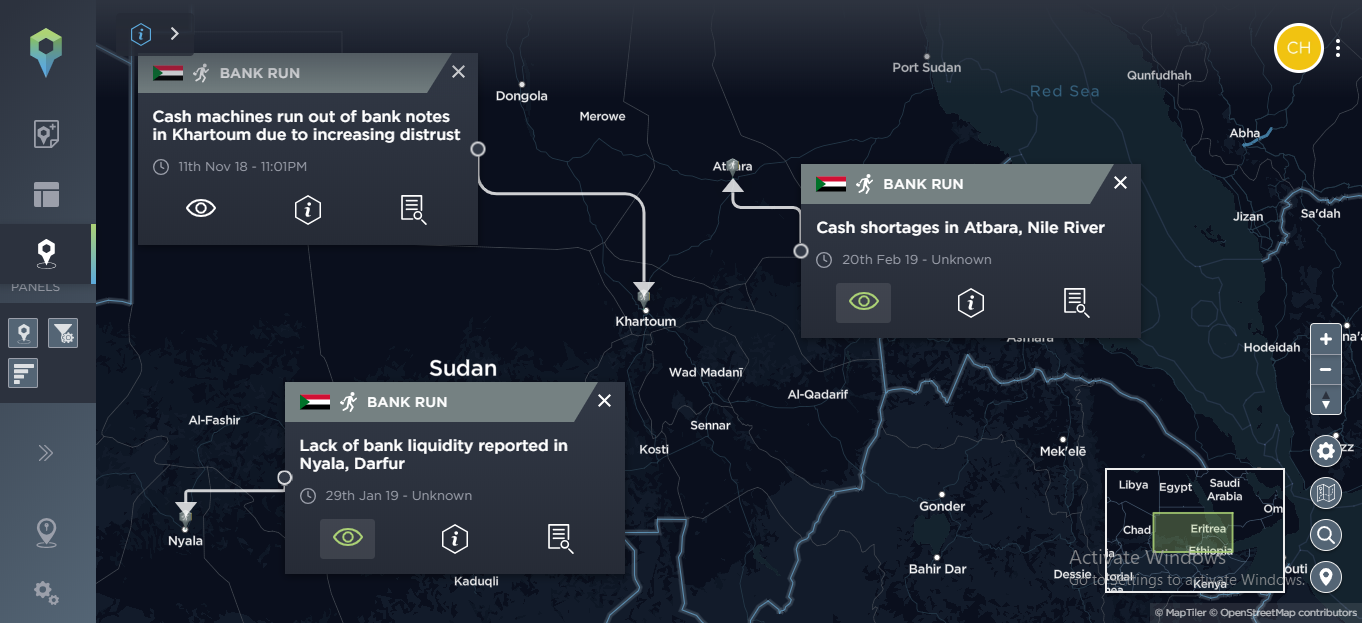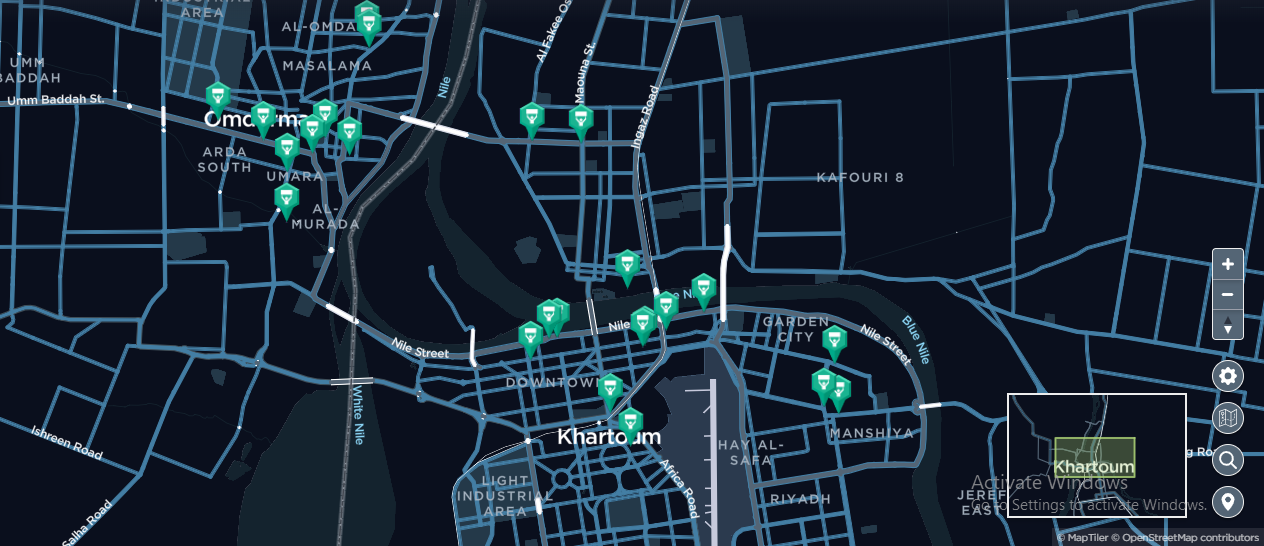State of Emergency in Sudan: Analysing Causes and Drivers
On February 22, Sudan’s President Omar al Bashir declared a state of emergency, something that may prove crucial for the development of future events. However, in order to exercise any predictive capabilities of the political situation, we need to take a deeper look at specific political and social dynamics of Sudan. The following post will briefly illustrate the causes of the tension, the reasons behind al Bashir’s decision and some thoughts on the political future of Sudan.
Causal Elements of the Tension
Omar al Bashir came to power in 1989 by means of a military coup and quickly managed to form a security apparatus around his power. On the political level, he shaped an Islamist political elite that has been accused of discriminatory policies and oppression of several Sudanese ethnic groups. In addition, he has also been indicted by ICC (International Criminal Court) for war crimes in Darfur. Concurrently, on the economical level, Sudan finds itself in a dire situation with a large national debt, increasing inflation rates, unemployment, and shortages in gasoline, basic food products, and banknotes. It is thus surprising that the government of al Bashir still devotes 14% of the federal budget to security purposes, with the sole aim to consolidate its power. On top of all these, Bashir had decided to amend the constitution in order to run again for the 2020 elections, extending further his long 30-year rule. In this respect, oppressive and authoritarian policies along with financial and political instability have been some of the reasons for social unrest.

A selection of threat incidents related to cash problems in Sudan – Reported by Intelligence Fusion
As a result, national dissent grew in such a scale that after the first anti-government demonstrations on December, protests appeared on a daily basis introducing it a revolutionized daily routine for some. The geographical scale and multitude of the demonstrations have been unprecedented. Not limited and centralized in the urban centers as previous uprisings, it quickly expressed a variety of people from different professional backgrounds. Doctors, pharmacists, journalists, students, and lawyers are the backbone of the movement, while noteworthy is that consists largely of young people. Those have felt kept out of politics and second-class citizens for too long and in combination with their non-violent stance, they present a unified and solid profile that encompasses different social and political groups.
At first, the Sudanese government replied with brutality against the demonstrations. Officials have argued 31 people have died (more than 50 according to other sources), hundreds have been wounded and more than 2500 have been arrested since the start of the protests. Omar al Bashir did not have the economic and political resources to address the root causes of the problem and therefore for some analysts, it was a rational choice to resort to security crackdowns and brutality.

Incidents related to anti-government demonstrations in Khartoum since January 2019 – Reported by Intelligence Fusion
The Decision for Declaration of a State of Emergency
In short, the state of emergency enabled Omar al Bashir to ban unauthorized protests, events or gatherings and establish emergency courts for violators of the law. He further dissolved federal and provincial governments and appointed army officers as governors in all Sudan’s provinces. His aim was twofold: a) he achieved to expand his security apparatus over political structures and possibly, political opponents b) he ensured the support of the army to his government. The role of the army forces has always been decisive in the history of Sudan, playing a major role in every coup attempt. Additionally, what al Bashir needs urgently is time. Time in order to find financial assistance from other Arab countries and time in order to facilitate an internal political dialogue which will safeguard his rule. The army forces, therefore, along with his strong security apparatus (NISS and RSF forces) will attempt to provide protection and time to the Sudanese president.
Giorgio Agamben (2005) has argued on the state of emergency as a political weapon of securitization. By such an analysis, what the declaration provides to al Bashir is the ability to promote himself as an element of stability, while stressing the danger of insecurity. ‘’We will not let the country slip into the unknown. We will not hand over the country to traitors and we will not hesitate to confront them at any cost in order to preserve the security of the country and the safety of citizens” said General Abdel-Marouf. Constructing a narrative of enemies (Darfurians, South Sudanese etc.) and urgent situation enables al Bashir to justify any breakdown of the constitutional order and abrogation of political identities and rights. Technically, it creates a deficit of legality, by trying to apply the rule of lawful order and security of the state. Practically, it gives al Bashir the space and time to do whatever it takes in order to protect his rule of law.
A Glimpse into the Future
Taking into consideration the above, a counter-revolution supported by the army was among the likely scenarios before the declaration. Although the likelihood diminishes, this scenario still holds especially when considering the unified profile and huge influence of the movement. Another factor to take into account is the international pressure. As mentioned previously, al Bashir is wanted by the ICC, therefore stepping down and fleeing abroad is not that likely. Support from Arab countries could not be crossed out, however, Saudi Arabia, Qatar etc. still doubt about the gains from harboring al Bashir. This is also one of the reasons that they seem reluctant to provide further financial aid to Sudan since they do not know if al Bashir could remain in power for long.
The lack of international support and the persistent activity of the protesters have also facilitated a change in the nature of al Bashir’s crackdown. His tactic has changed into releasing detainees and employing non-lethal forms of suppressing demonstrations, hoping that the anger will diminish. As mentioned previously, al Bashir is still testing the waters, while giving his government space to breathe. If he decides again to violently suppress the social unrest, this could descend into further conflict (especially if armed Darfurian rebels decide to engage more actively). On the other hand, if he facilitates an open dialogue, the scenario of a new transitional government – without him – could be accepted by the public. In any case, essential drivers of the incidents such as unity of the protesters, the stance of the armed forces, the international support and the cohesion of the party of al Bashir will determine the route that Sudan will follow.
Intelligence Fusion continue to monitor the current situation in Sudan. If you’d like to find out how we can help your business, contact us for a free demonstration of our services today.
___________
References
Abbas, R. (2019). Sudan’s protests: The revolt of the periphery. [online] Aljazeera.com. Available at: https://www.aljazeera.com/indepth/opinion/sudan-protests-people-revolution-led-periphery-190127061619964.html [Accessed 3 Mar. 2019].
Aboelfadl, M. (2019). Precarious standoff between Sudanese regime and demonstrators | [online] The Arab Weekly. Available at: https://thearabweekly.com/precarious-standoff-between-sudanese-regime-and-demonstrators [Accessed 8 Mar. 2019].
Agamben, G. (2005). State of Exception. Chicago: University of Chicago Press.
Bishai, L. and Elshami, A. (2019). “We are all Darfur!” – Sudan’s Unity Protests Stand a Real Chance. Time for the West to Step Up. [online] Just Security. Available at: https://www.justsecurity.org/62404/we-darfur-sudans-unity-protests-stand-real-chance-time-west-step-up/ [Accessed 25 Feb. 2019].
Dwamena, A. (2019). The Historical Precedents of the Current Uprising in Sudan. [online] The New Yorker. Available at: https://www.newyorker.com/news/news-desk/the-historical-precedents-of-the-current-uprising-in-sudan [Accessed 1 Mar. 2019].
El-Battahani, A. (2019). Sudan uprising: Anything can happen. [online] Middle East Eye. Available at: https://www.middleeasteye.net/opinion/sudan-uprising-anything-can-happen [Accessed 14 Feb. 2019].
Zaidan, Y. (2019). Generational Conflict and Forging the Future in the Current Sudanese Movement. [online] Washingtoninstitute.org. Available at: https://www.washingtoninstitute.org/fikraforum/view/generational-conflict-and-forging-the-future-in-the-current-sudanese-moveme [Accessed 2 Mar. 2019].


